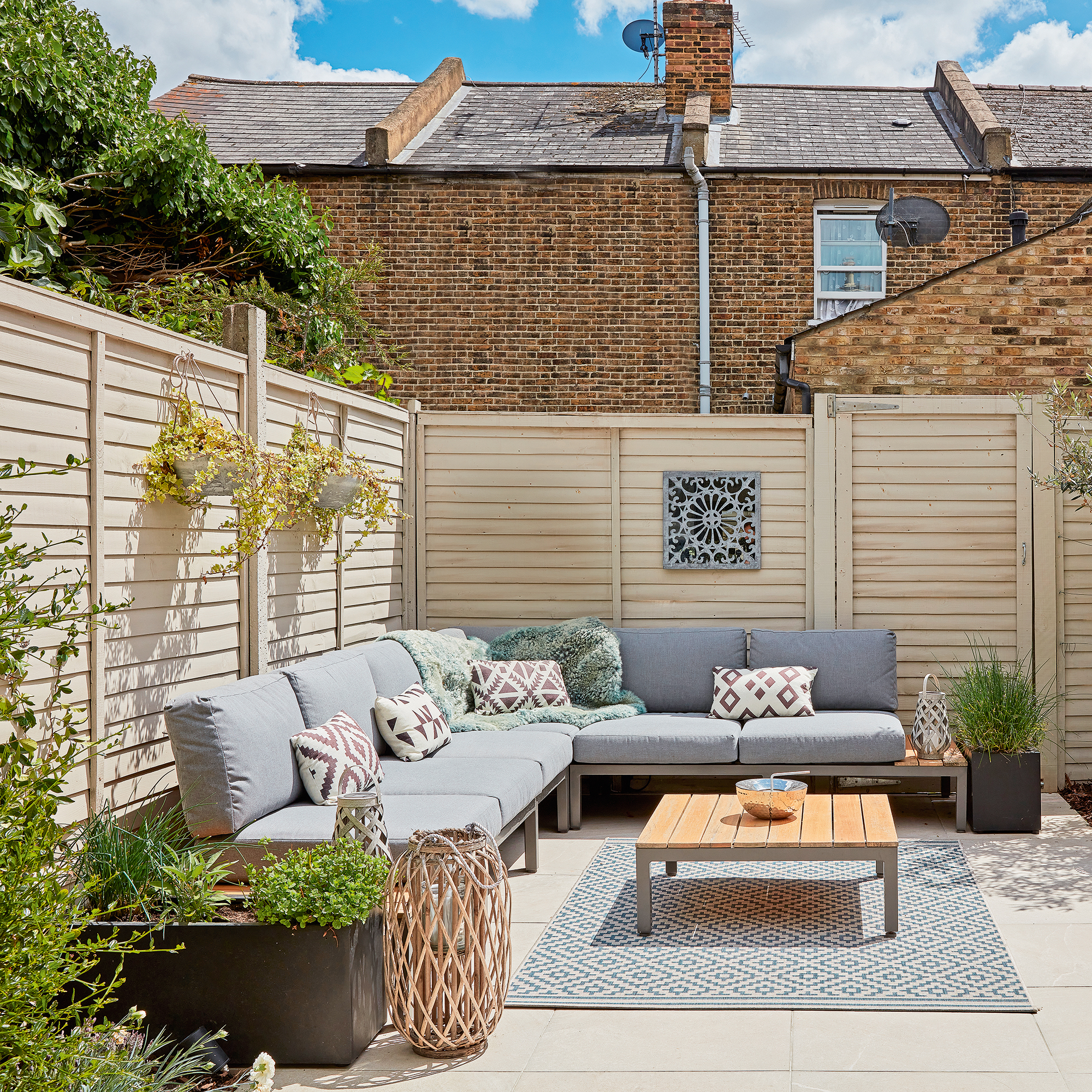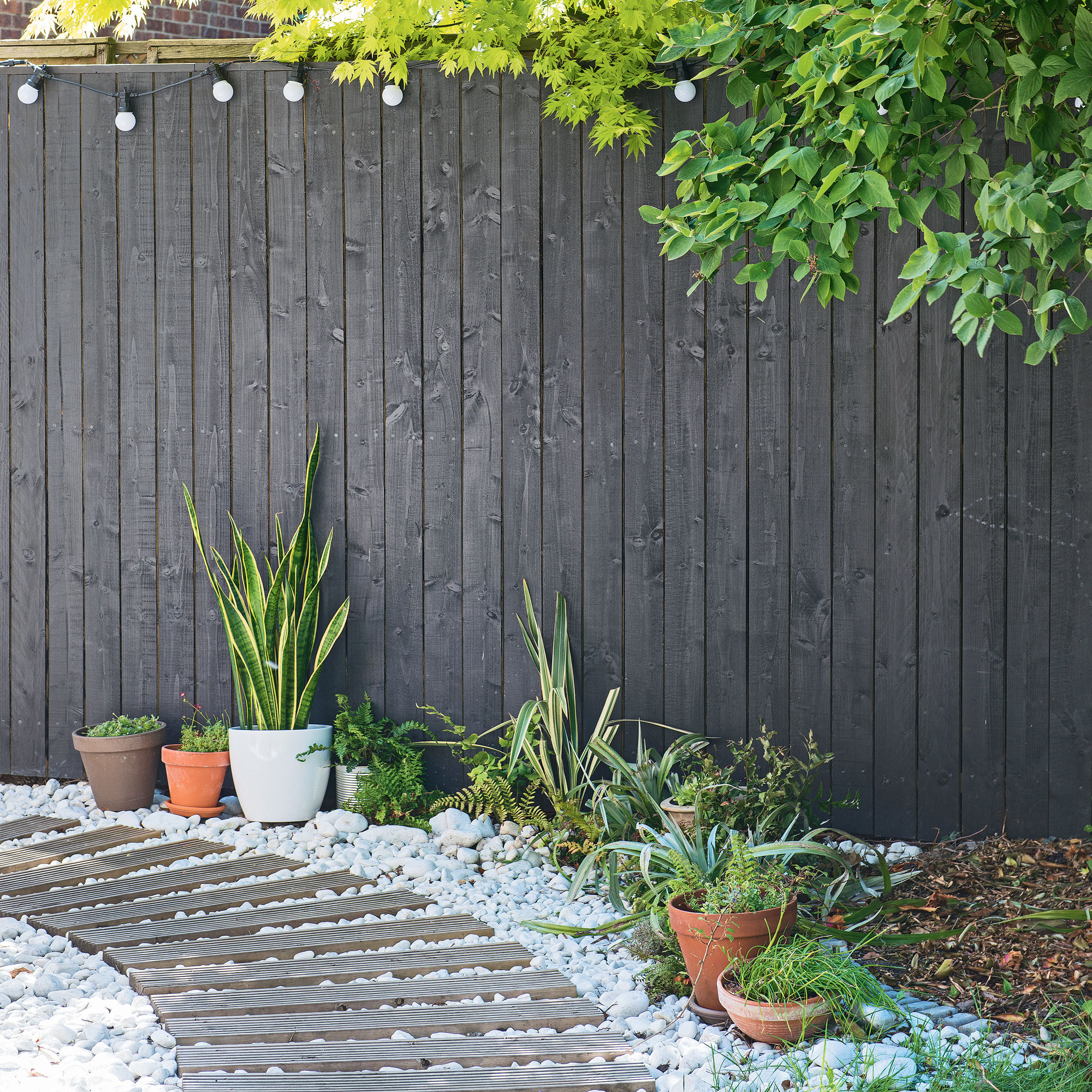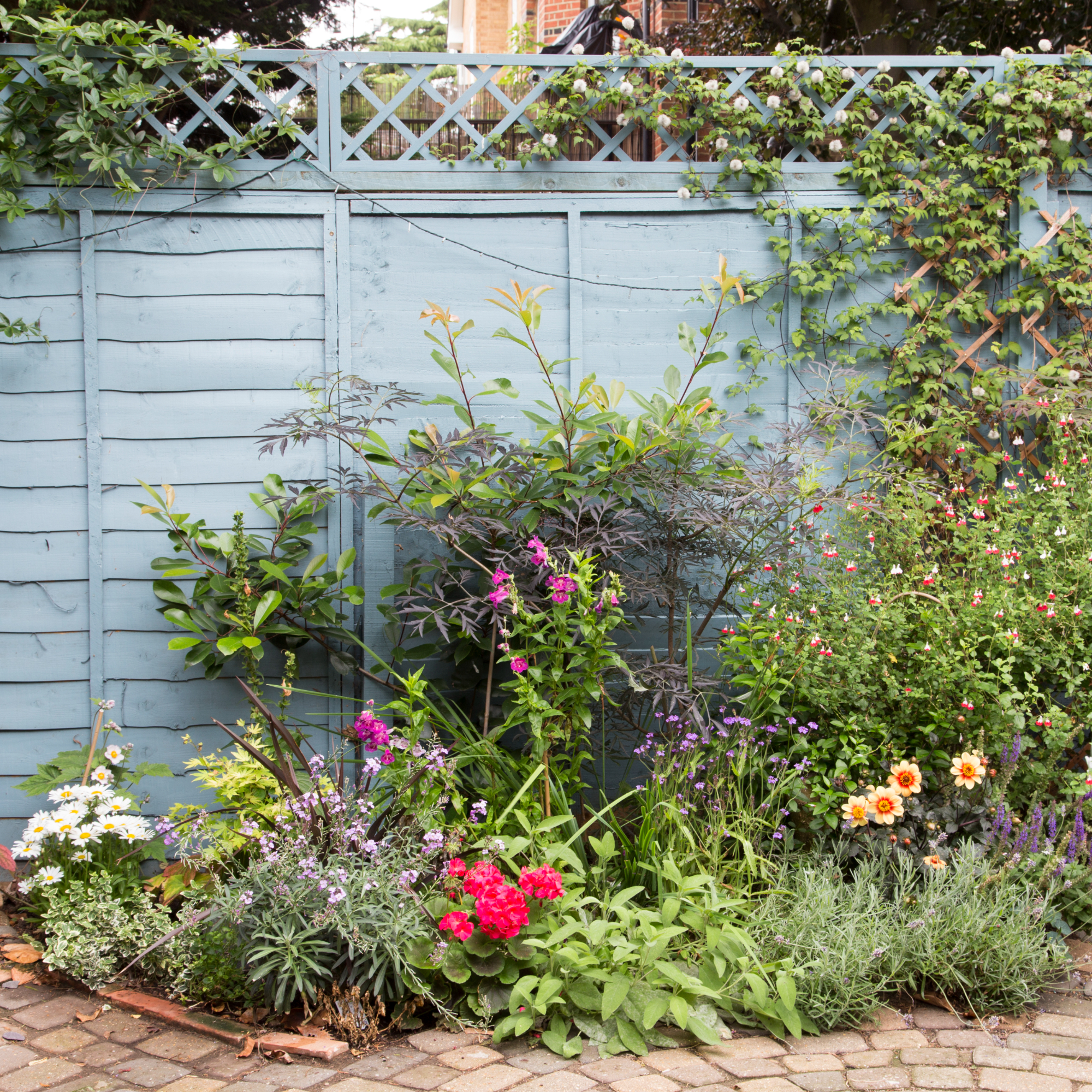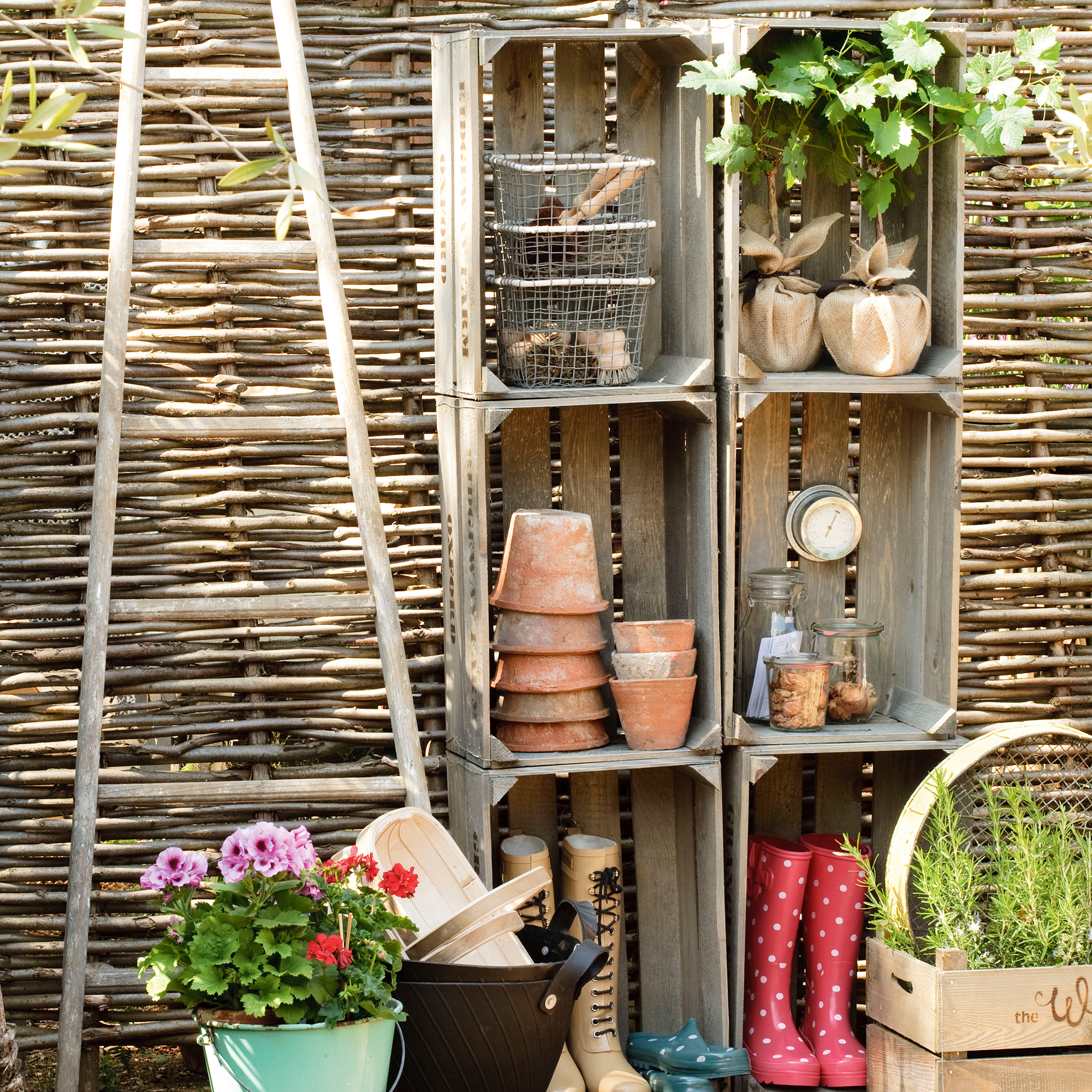
If you live in a detached house, the responsibility of repairing and replacing damaged or broken fencing falls upon you. But what happens when you live in a terraced or semi-detached home? How do you know what fence is yours? Well, that’s when things get a little more complicated.
Whether your garden fence ideas have been ruined by a winter storm or succumbed to wood rot over the years, it’s important to repair or replace them as soon as possible. But when a fence is straddling two separate houses, the wrong course of action could result in a dramatic dispute between you and your neighbours. If they claim that the fence is yours, but you claim that the fence is theirs, you'll just be going around in circles.
Thankfully, there is a surefire way to know what fence is yours, which is why we’ve consulted with the experts to share everything you need to know about fence boundaries, planning permission for garden fences, and your legal rights as a homeowner.
How to identify who owns a fence
A long-standing myth within the property world is that homeowners own the fence to the left of their property as you look at the house from the street. However, this is not true and is something I can testify against myself, as my own fence is on the right!

To truly identify who owns a fence, it’s best to refer to the Title Plan or Land Registry for your home. These boundary documents should have been presented to you when you bought the house and will show you everything you own - from the front garden boundary to the back garden and the fences.
Craig Wilson, Co-Founder and Director at Gardeners Dream, explains, ‘When it comes to who owns what fence, it can be quite confusing, and can often cause problems between neighbours. To avoid this, refer back to the title deeds to your house. Here, you will find a visual of your home's boundary lines, which will indicate which side you have ownership of, often marked with a ‘T’.’

If the ‘T’ is within the boundaries of your property, then you own the fence and are ultimately responsible for maintaining it. If the ‘T’ is on both sides of your boundary, however (creating an ‘H’ shape), this indicates that the fence is owned by you AND your neighbour. Therefore, you’re both responsible for the upkeep of the fence.
While inspecting the paperwork that came with your house is the best way to identify who owns a fence. But you might also wonder whether you can work out fence ownership just by looking at the fence.
Well, the jury is out on that one. In many cases, the person who owns the fence always has the ‘good’ side facing into their neighbour’s garden - i.e., the smoother side without any rails. But in a day and age where fence panels come in many different shapes and forms, sometimes it’s impossible to distinguish the ‘good’ side from the ‘bad' side.
Because of this, experts would always encourage using legal documents to understand your boundaries fully.
What to do if you can’t find paperwork confirming fence ownership
Nine times out of ten, you should have been presented with the Title Plan or Land Registry information when buying your home. But if your house didn’t come with this information, or you’ve lost this information over the years, there are a few things you can do.
For starters, you could simply ask your neighbours. If they have the boundary information to hand, they should be able to confirm whether or not they own the fence - ultimately answering your question in the process.
If they don’t have this information either, you can come to an unofficial boundary agreement between yourselves, or you could enlist the help of a boundary surveyor or solicitor who can do some extra digging for you.

The experts at Toolstation explain, ‘If your deeds and title plan don’t reveal anything and there are no existing boundary agreements in place, you can try to establish who’s responsible for the fence by making a boundary agreement with your neighbour.’
‘You and your neighbour can create an agreement to record the boundaries between your properties. This will outline who’s responsible for garden fence maintenance and repairs. Once you’ve agreed, you’ll need to apply for it to be recorded on the Land Registry.’
You can apply for a ‘determined boundary’ through the gov.uk website. This will cost you £90 plus your legal fees, and it’s important to note that your neighbour has to either agree or reject this application for it to be successful.
What to do when a neighbour’s fence is broken
If you’ve determined that your own fence is in need of repair, you can then take the necessary measures to fix it. It’s not so straightforward when a neighbour’s fence is broken, though.
Although you can ask your neighbour to fix their fence, they are under no legal obligation to do so - even if their fence panel has fallen down into your garden. Of course, they have to remove the fence, but there is no legal requirement for them to replace the fence.

Although this can be frustrating, there’s ultimately no way that you can force them to do something they might not want to (or have the money to) fix.
If it’s really getting on your nerves, you could shell out your own money to fix the fence - as long as your neighbours oblige. You could either replace or repair it yourself, or you could install your own secondary fence or garden screens inside of your neighbour’s fence.
You need to be careful when taking matters into your own hands, though. The experts at Toolstation say, ‘If your neighbour owns the fence, you’ll need to ask for their permission before making any changes to it. This includes raising the height, leaning or hanging items against it or even just painting your side of it. This is because paints and stains can bleed through to the other side.’
What to do when your own fence is broken
If you are confident that you do, in fact, own the fence that has blown over or been damaged in some way, it’s best practice to repair it as soon as you can. As previously mentioned, you don’t legally have to do this, but it’s still recommended.
Michael Birch, Director at J&A Phillips Builders Merchants, suggests doing the following:
‘Firstly, if the fence panel is down but undamaged, remove any loose nails and fixtures and move the panel to a safe area - make sure it’s not leaning on another part of the fence as it may cause another area to become weak.’
‘If the damage is substantial, you should ring your home insurer as soon as possible after the damage occurs. It may help to take photos and videos of the damage where possible and if it is safe to do so. They may have workers they can send to your property, or you might have the option to organise your own repairs.’

The best course of action for renters when a fence is broken
Just as the landlord of a rented property is responsible for keeping the house in tip-top condition, they’re also responsible for maintaining the fences. So, if you rent and notice a broken fence, it’s important to contact your landlord as soon as possible.
The landlord should then refer to their own paperwork to determine whether it’s their fence or their neighbour’s fence and take the necessary course of action to either repair it themselves or wait for the neighbour to replace theirs.
However, if the fence was broken by the tenant, it’s highly likely that your landlord will expect you to pay for the repairs. It’s best to check your tenancy agreement for the specifics, though.
FAQs
How do I identify my fence?
The best way to identify your fence is to refer to the Title Plan or Land Registry for your house. This information should have been presented to you when you bought your house, but can also be found online through the government website.
Some modern houses don’t come with these exact boundaries, though, which means that you may need to apply to make a ‘determined boundary’ to distinguish your fence from your neighbour’s fence.
Which side of the fence is my responsibility?
‘Ownership and responsibility are generally tied together, but that’s not always the case,’ explains Scarlett Wyatt from Wyatt Fencing. ‘As a good rule of thumb, if you or your neighbour’s fence is broken and you’ve not previously discussed ownership or responsibility, it’s best to have that discussion and ensure everyone is on the same page before getting any work done.’
If you know that you do own that side of the fence, however, you’re responsible for both sides - regardless of whether the broken side is facing your garden or your neighbour’s garden. And if the fence falls into your neighbour’s garden, you are required to remove it.
While it’s important to note that you have no legal requirement to repair or replace the fence, it’s generally considered the best course of action to replace the fence when needed. Not only will this make your own garden secure, but it will also keep your neighbours on your good side.
While fences are an essential part of your property, undefined boundaries can cause problems. That’s why it’s always a good idea to know what fence or fences you own.







